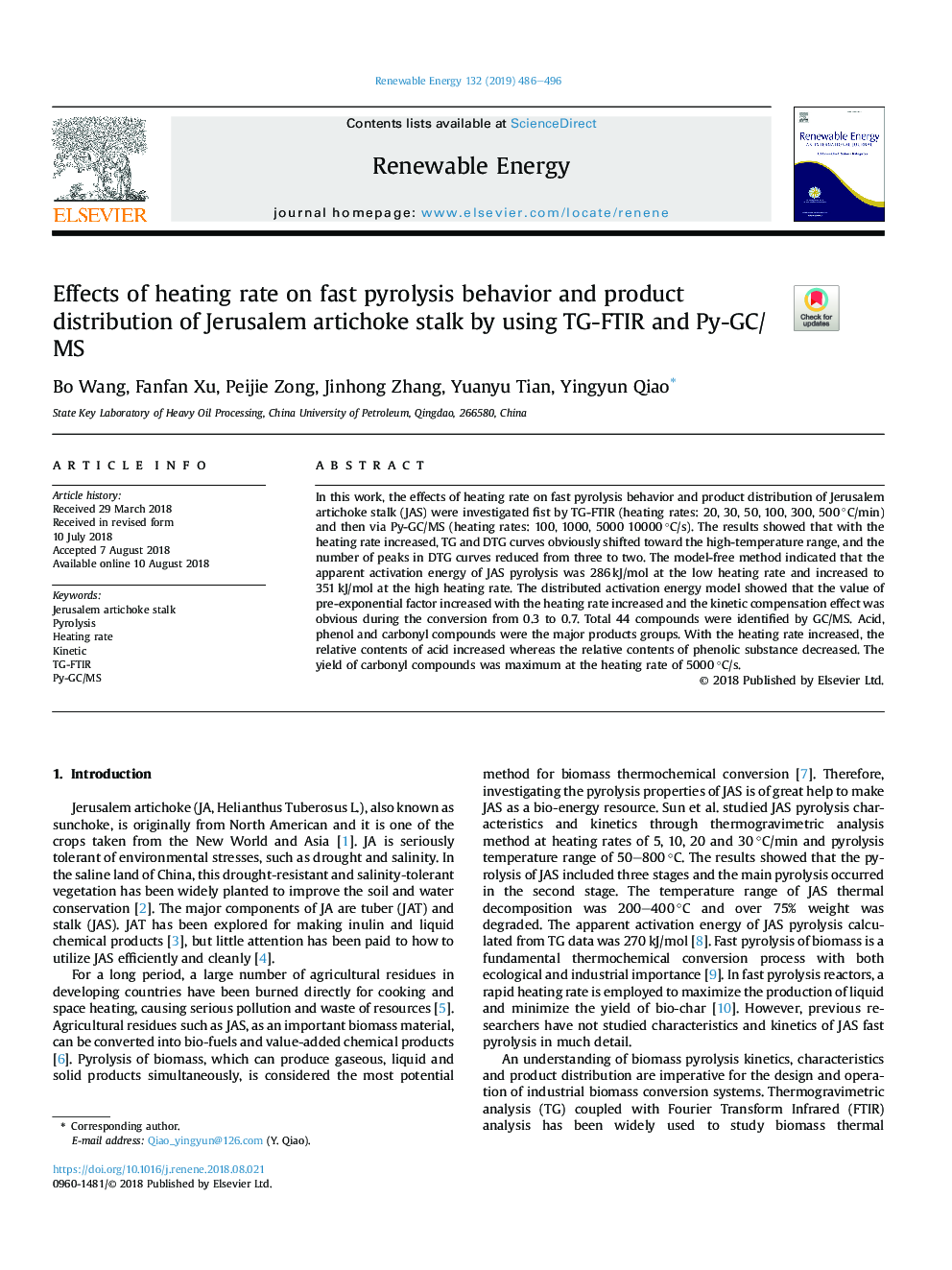| کد مقاله | کد نشریه | سال انتشار | مقاله انگلیسی | نسخه تمام متن |
|---|---|---|---|---|
| 6763586 | 1431570 | 2019 | 11 صفحه PDF | دانلود رایگان |
عنوان انگلیسی مقاله ISI
Effects of heating rate on fast pyrolysis behavior and product distribution of Jerusalem artichoke stalk by using TG-FTIR and Py-GC/MS
دانلود مقاله + سفارش ترجمه
دانلود مقاله ISI انگلیسی
رایگان برای ایرانیان
کلمات کلیدی
موضوعات مرتبط
مهندسی و علوم پایه
مهندسی انرژی
انرژی های تجدید پذیر، توسعه پایدار و محیط زیست
پیش نمایش صفحه اول مقاله

چکیده انگلیسی
In this work, the effects of heating rate on fast pyrolysis behavior and product distribution of Jerusalem artichoke stalk (JAS) were investigated fist by TG-FTIR (heating rates: 20, 30, 50, 100, 300, 500â¯Â°C/min) and then via Py-GC/MS (heating rates: 100, 1000, 5000 10000â¯Â°C/s). The results showed that with the heating rate increased, TG and DTG curves obviously shifted toward the high-temperature range, and the number of peaks in DTG curves reduced from three to two. The model-free method indicated that the apparent activation energy of JAS pyrolysis was 286â¯kJ/mol at the low heating rate and increased to 351â¯kJ/mol at the high heating rate. The distributed activation energy model showed that the value of pre-exponential factor increased with the heating rate increased and the kinetic compensation effect was obvious during the conversion from 0.3 to 0.7. Total 44 compounds were identified by GC/MS. Acid, phenol and carbonyl compounds were the major products groups. With the heating rate increased, the relative contents of acid increased whereas the relative contents of phenolic substance decreased. The yield of carbonyl compounds was maximum at the heating rate of 5000â¯Â°C/s.
ناشر
Database: Elsevier - ScienceDirect (ساینس دایرکت)
Journal: Renewable Energy - Volume 132, March 2019, Pages 486-496
Journal: Renewable Energy - Volume 132, March 2019, Pages 486-496
نویسندگان
Bo Wang, Fanfan Xu, Peijie Zong, Jinhong Zhang, Yuanyu Tian, Yingyun Qiao,